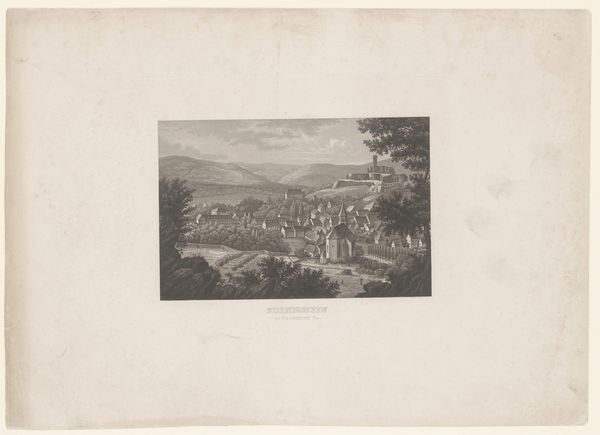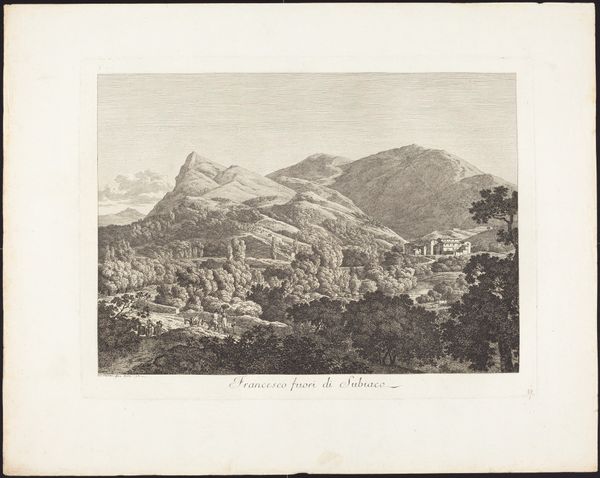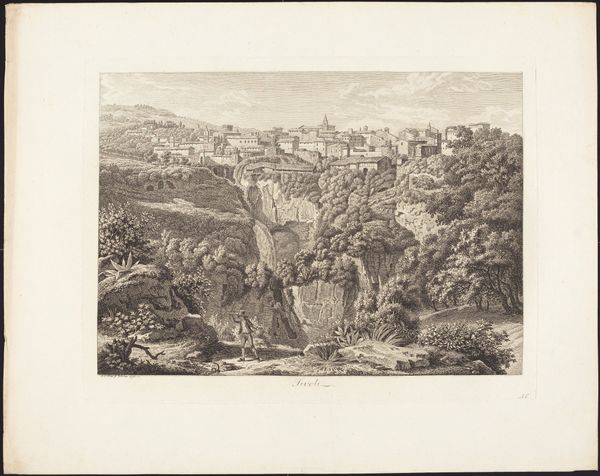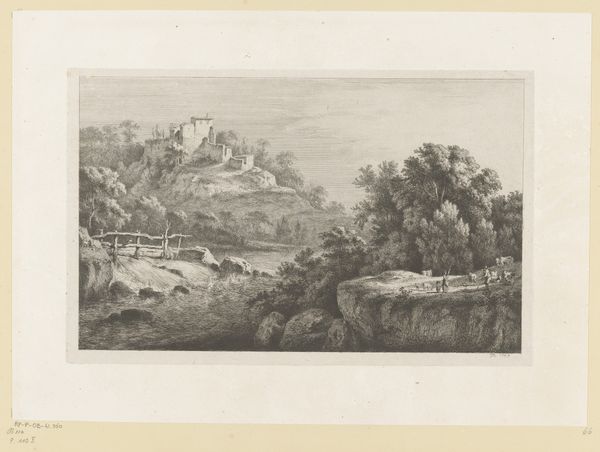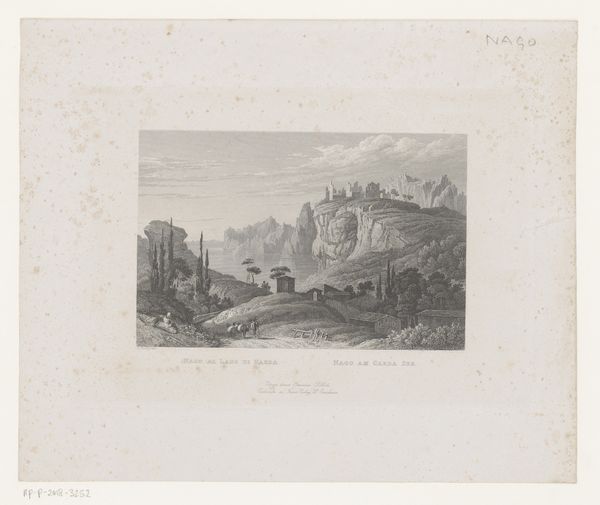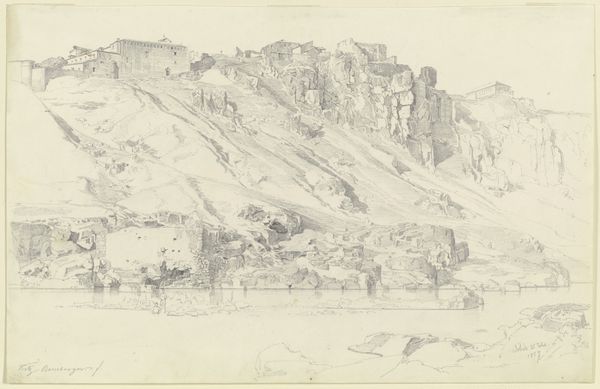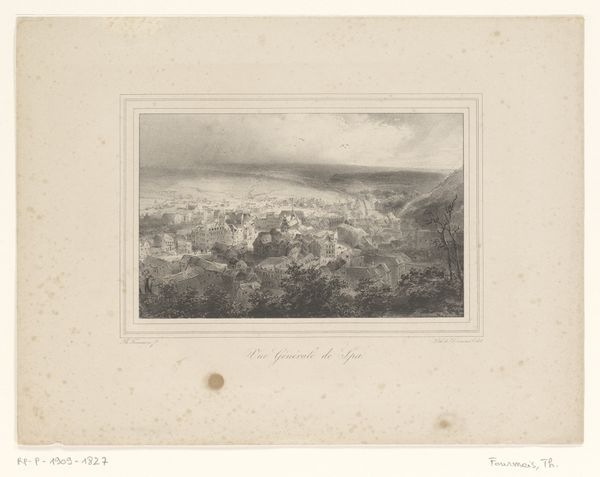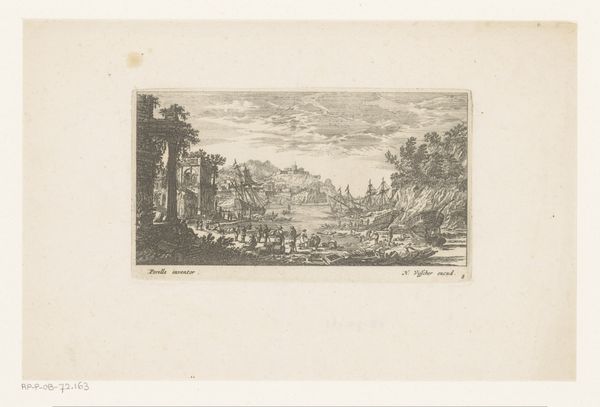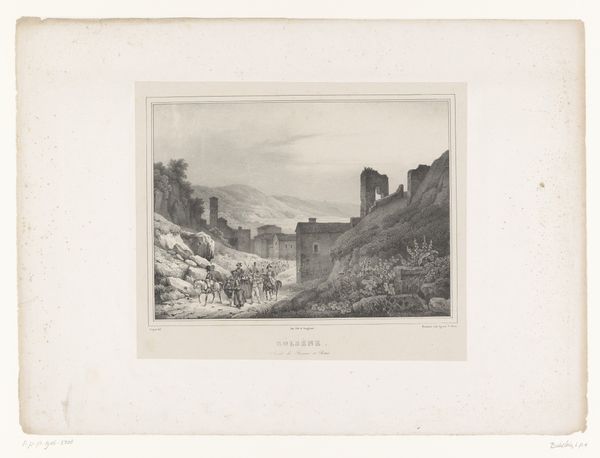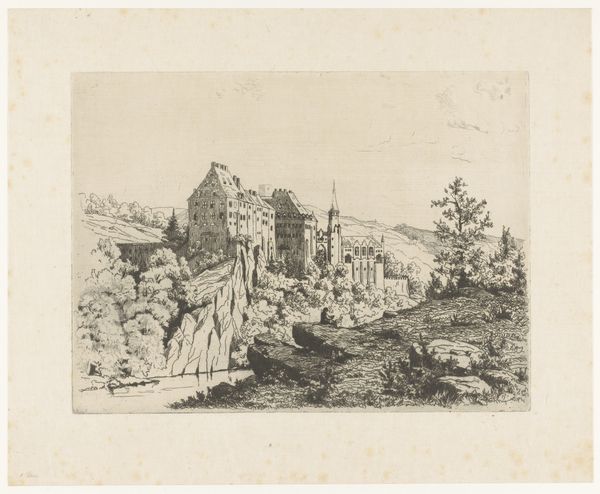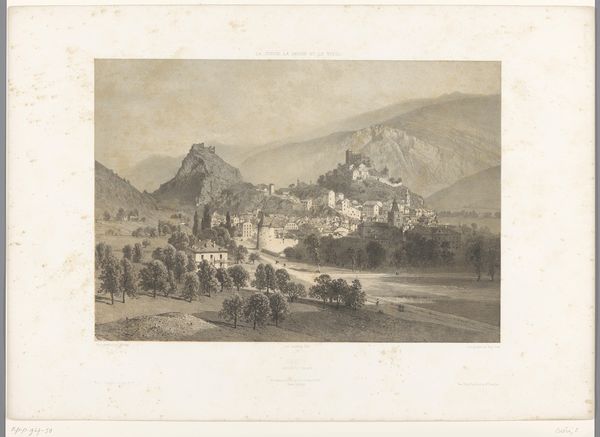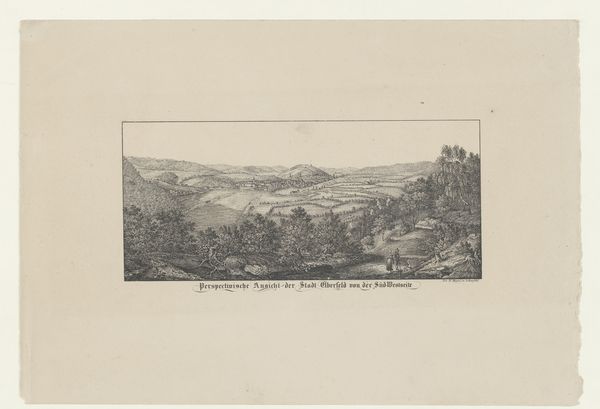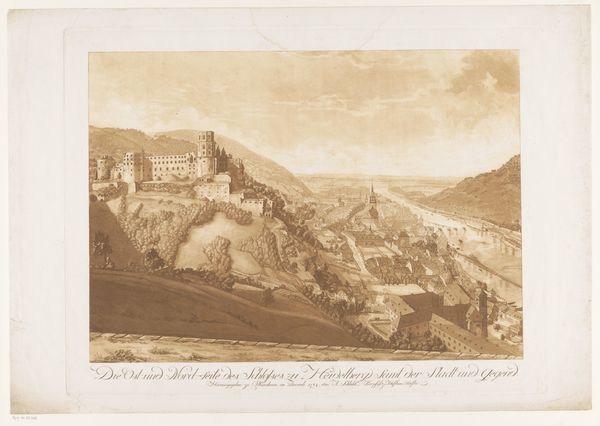
print, etching
# print
#
etching
#
landscape
#
cityscape
Dimensions: height 278 mm, width 277 mm
Copyright: Rijks Museum: Open Domain
Editor: Here we have Armand Heins' etching, "View of the Castle at Bouillon," dating from around 1866 to 1910. I'm immediately drawn to how the formidable castle dominates the landscape; the town almost seems nestled beneath its shadow. What can you tell us about the role of landscapes like these in the art world at the time? Curator: It's crucial to consider the rising tide of nationalism during that period. Landscapes weren't simply pretty pictures. They were potent symbols of national identity, carefully constructed to evoke a sense of belonging and shared history. A medieval castle like this wasn't just a building; it represented a historical narrative, a romanticized past carefully curated for the present. Think of the socio-political messages in it. Who does it benefit when the artwork portrays Bouillon in this way? Editor: So, the image may influence a viewer's perspective about the past? Curator: Exactly! How does the depiction of this seemingly quaint town relate to broader power structures and social hierarchies? Editor: That's something I hadn't considered. I tend to look at art from a purely aesthetic point of view. Curator: That's a starting point, but remember museums and galleries have an agenda, either intended or unintended. And those decisions change through history. Examining art this way reveals whose stories are being told, whose values are being promoted, and what ideas are being normalized within the public consciousness. Did this image influence ideas about urbanism, government or patriotism? Editor: Viewing art as a product of socio-political forces adds another layer to understanding. It challenges us to think critically about how images shape our perceptions and reinforce existing power structures. Curator: Precisely. It turns passive viewing into active analysis, fostering a deeper engagement with both the artwork and its cultural context.
Comments
No comments
Be the first to comment and join the conversation on the ultimate creative platform.

